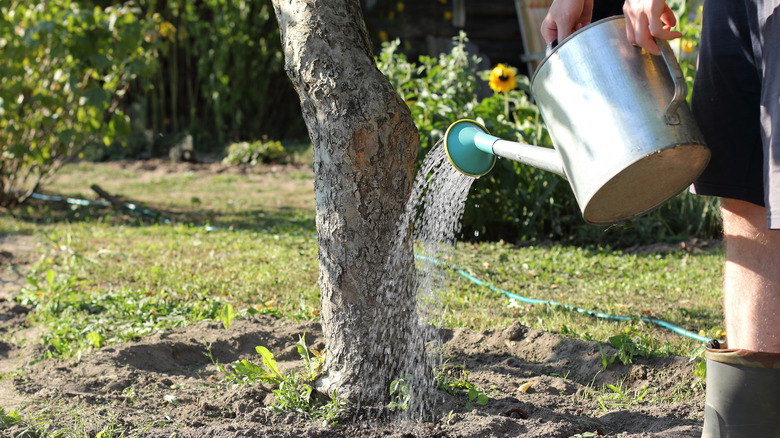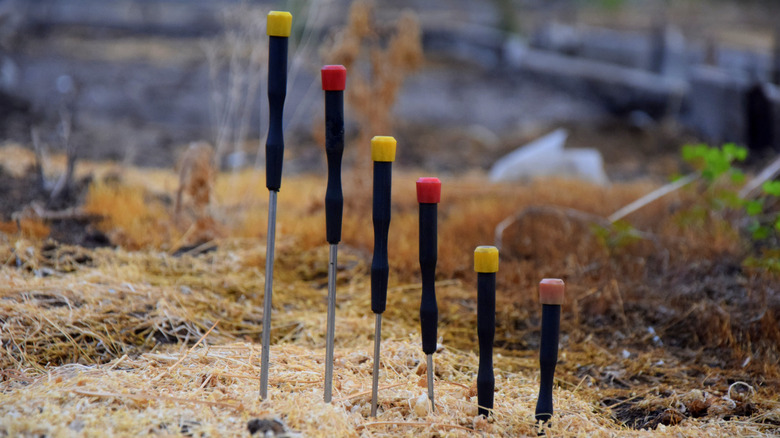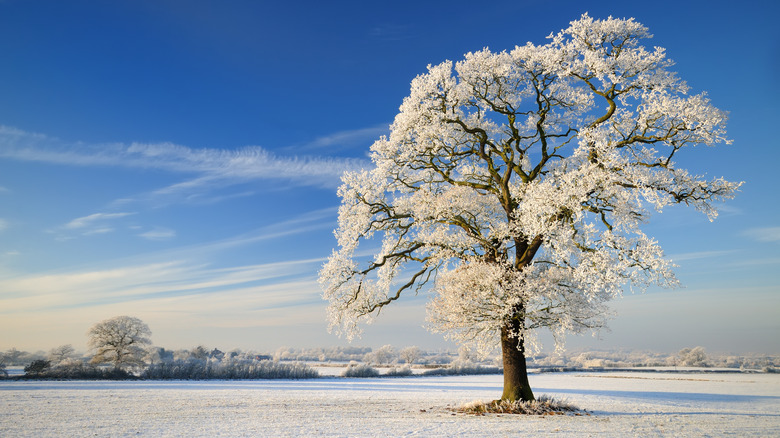The Mistake That Is Preventing Your Tree From Getting Enough Water
Watering backyard plants regularly during the dry season seems to be common practice, but for some reason, trees tend to be left out. Although trees do not need to be watered nearly as often as other plant species, it is important to give them a good deep soak to avoid problems and, in some cases, tree death.
During dry periods of little to no rainfall, most tree species need to be watered about once a month. If your tree needs water, you will start to notice visible signs like the leaves wilting and curling or the tips and edges starting to turn brown. In some cases, the foliage will begin to prematurely change color and the leaves will fall from your tree. If this is happening, it is best to observe the soil.
Most tree species prefer soil that's cool and moist about 18 inches deep into the ground. The depth of moisture matters because a tree's fine roots stretch down to 12 inches deep in the soil and pick up water and nutrients to feed the tree and keep it healthy. A sign of a dehydrated tree is the dirt will be really dry.
To make sure your tree is getting enough water, there's a method you can easily try with a tool at home called the "screwdriver method." Essentially, if the screwdriver does not easily sink into the ground, that is a good indication that your tree needs water.
Test the soil moisture by pushing a screwdriver into the ground
With a pair of gloves on, take your screwdriver that's ideally 8 inches long and insert it into the soil near the tree's dripline — this is the outer circumference of the tree's canopy where water naturally runs off the tree and onto the ground when it rains. If the soil is hard and you cannot get the screwdriver to easily go at least 6 to 8 inches deep, that means the soil is too dry and your tree needs water.
When you begin watering your tree, focus on the outer half of the canopy and beyond and avoid watering too close to the trunk — doing so can increase the chances of rot. At least the top few feet of soil under the tree needs to be soaked, so if the water is running off, stop watering for a moment and let it sink in before starting again.
It should be mentioned that younger trees need more frequent watering than mature trees. To make sure you're watering the newly planted trees in your yard enough, be sure to apply about an inch of water once a week and dampen the root ball right around the trunk.
Checking soil conditions in the winter
The screwdriver method is not reserved for warmer seasons; it can indeed be helpful during the winter months, too. In this case, the method is useful to determine if the ground has thawed enough to water your tree. When temperatures are above 40 degrees, your screwdriver should easily sink into the ground, which means the soil has thawed enough for you to safely water your tree.
For climates that are dry during the winter, it is recommended to soak your tree once a month. Neglecting to water it can starve the roots, and the tree will have to use more resources in the spring to recover. To save yourself some time, you can try the bucket hack that will cut your tree-watering time in half.
Keep in mind, your tree can suffer from receiving too much water as well. The signs of an overwatered tree can look incredibly similar to an underwatered tree, with characteristics such as yellowing leaves. One sure sign of an overwatered tree is muddy, drenched soil.
Whatever your environmental conditions may be, make sure to check on your trees.


